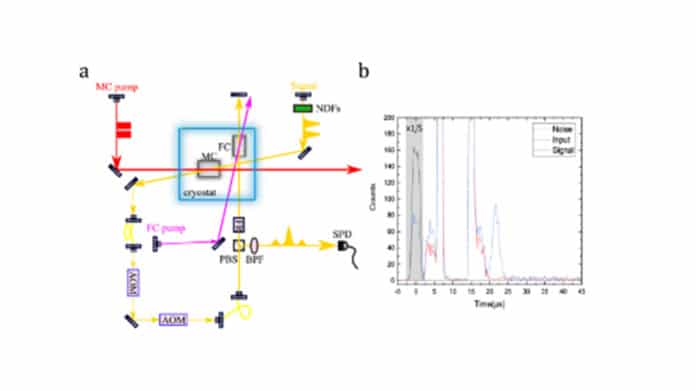Photon echo is a fundamental tool for the manipulation of electromagnetic fields. Unavoidable spontaneous emission noise is generated in this process due to the strong rephasing pulse. This limits the achievable signal-to-noise ratio and represents a fundamental obstacle towards their applications in the quantum regime.
However, the intense spontaneous noise emission generated has the same frequency as the signal; it is impossible to separate them in principle.
Previous protocols, such as atomic frequency comb and the revival of silenced echo, failed to eliminate the spontaneous noise emission as much as needed.
In a new study, Prof. LI Chuanfeng and Prof. Zhou Zongquan from the University of Science and Technology of China (USTC) of the Chinese Academy of Sciences (CAS) innovatively raised and realized noiseless photon echo (NLPE) protocol. They served the protocol as an optical quantum memory in Eu3+:Y2SiO5 crystal. They also applied a four-level atomic system to suppress the noise.
By double rephasing the pulse in the four-level atomic system, scientists could manipulate the spontaneous noise emission to have a different frequency from the signal. This made it easy to separate the signal from the noise emission.
The experiments showed that the noise was 0.0015 photons, 670 times less than previous results. Besides, the efficiency of NLPE was more than three times larger than that of previous protocols.
Journal Reference:
- You-Zhi Ma et al., Elimination of noise in optically rephased photon echoes, Nature Communications (2021). DOI: 10.1038/s41467-021-24679-4
